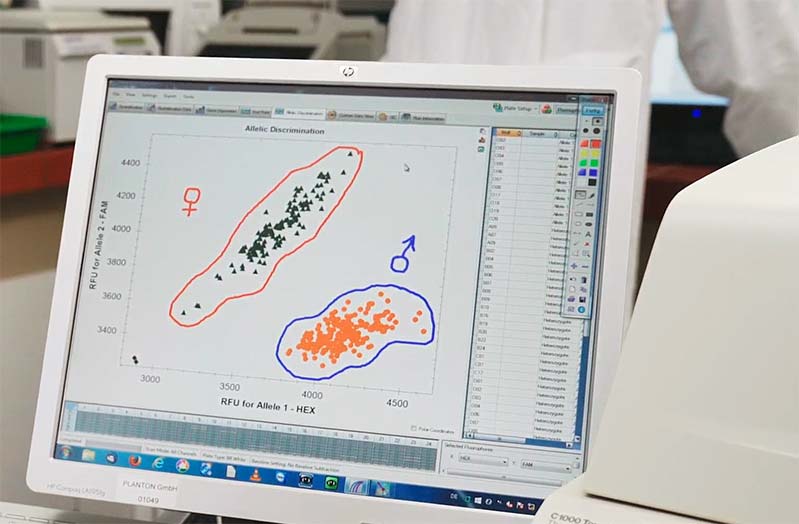-

In-Ovo
gender determination

The male hatching eggs can be identified long before the hatch and put to another use.

The Plantegg process meets all requirements of the poultry industry: · high precision · fast throughput · large capacity

Due to the PCR-Technology, genetic differences in the hatching egg can be shown in an early stage.

The aim of our innovative process is the gender determination in chicken eggs. This avoids the killing of hatched male day-old chicks in hatcheries during the production of laying hens.
New technologies have been developed and combined for the so-called "PLANTegg" process - a PCR-based method for gender determination of hatching eggs.
This molecular genetic method is based on the fact that the chickens have different gender chromosomes. The PCR technology makes the genetic differences, to be found in the DNA of the allantoic fluid, visible.

The gender can thus be determined at an early stage of incubation with high precision and very quickly (within one hour). The eggs from which male chicks would hatch can then be sorted out early and used for other purposes. The method can be automated, is infinitely scalable and can therefore be used in both small and large hatcheries.
„This is an industrial applicable system that fully meets all the poultry industry’s requirements for high precision, fast throughput and large capacity. It means that chicks killing can be dispensed with comprehensively,“ said Prof. Dr. Michael Kleine, Managing Director of PLANTegg GmbH.
Access to the Egg
The hatching eggs are transferred to a robot, which first creates a tiny opening in the hatching egg with the help of a laser beam.
Processing
A few drops of the allantoic liquid are taken from this opening with a pipette and transferred to test tubes. The allantoic fluid contains genetic material (DNA) which provides enough information for a genetic examination.
DNA Analysis
The allantoic fluid is combined with a reactive medium and transferred to a PCR machine. There the multiplication of the specific DNA of the gender chromosomes takes place, so that male and female hatching eggs can be determined with high precision.
Sorting
Finally, the female eggs are returned to the hatching process and the male eggs are used for other purposes (e.g. as feed).

You have questions or would like to get in touch with us. Please don't hesitate to send us a message using the following contact form. We look forward to receiving your message.

Prof. Dr. Michael Kleine
Groß Hasselrod 2
24159 Kiel
P: +49 (0)431 38015-0 F: +49 (0)431 38015-11